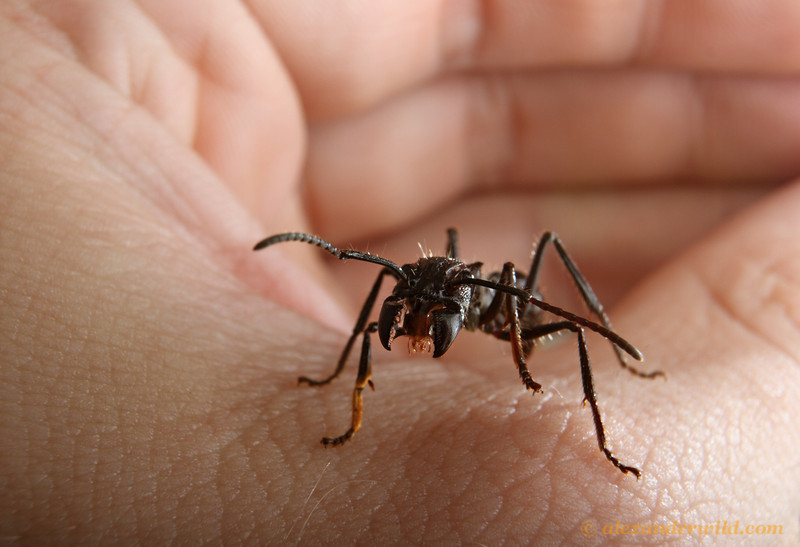
Interactions
Even though Paraponera clavata are known for their highly complex stinger used as a defense mechanism, the ants still have a few natural enemies within their Neotropical environments. Apocephalus paraponerae, commonly known as the Phorid fly, exhibits a parasitic relationship with the Bullet Ant. Parasites of injured P. clavata workers, these flies are small and hump-backed, closely resembling the common fruit fly. The male and female Phorid flies are attracted to the scent of any injured worker ant. The females lay their eggs and occasionally feed on the ant, while the male flies primarily use the injured ant as a food source.
Another natural enemy of the Bullet Ant is an entomopathic fungus, a parasite that leaves mummified spore-bearing ants, clinging to any type of vegetation. This fungus uses the Bullet Ant as a host, and manipulates it in order to increase its own chances of reproducing as a means of survival. In order to germinate, the spores of this particular fungus attach themselves to the external surface of the ant and proceed to enter the ant's body through the trachea. The mycelia of the fungus start to grow within the body cavity of P. clavata and absorb the soft tissues of the host. Once the fungus is ready to finally sporulate, the mycelia from the body cavity start to grow into the ant's brain. Once the mycelia completely engulf the brain, it releases chemicals that alter the ant's perception of pheromones. This stimulates a reaction within the ant, causing it to climb to the highest point of a plant, and clamp its mandibles around the plant stem which will serve as the death spot. At this point in time, the fungus devours the ant's brain which ultimately kills it. The gaps in the joints of the ant's skeleton serve as a place for the fruiting bodies of the fungus to sprout from. Once these fruiting bodies completely mature, they release capsules which eventually burst and release spores that go on to infect other ants.
The Bullet Ant lives a somewhat predatory lifestyle. When it feels that it is threatened or that its colony is in danger, it will use its main defense mechanism, its stinger, as a way to ward off any possible dangers. Humans in fact can be seen as a source of danger; however, it is rare for a human to be stung unless they are disrupting the nest or home of the P. clavata colony (Morgan, 2012).
Proceed to the Facts page to learn some extra interesting information on P. clavata, or return Home.
